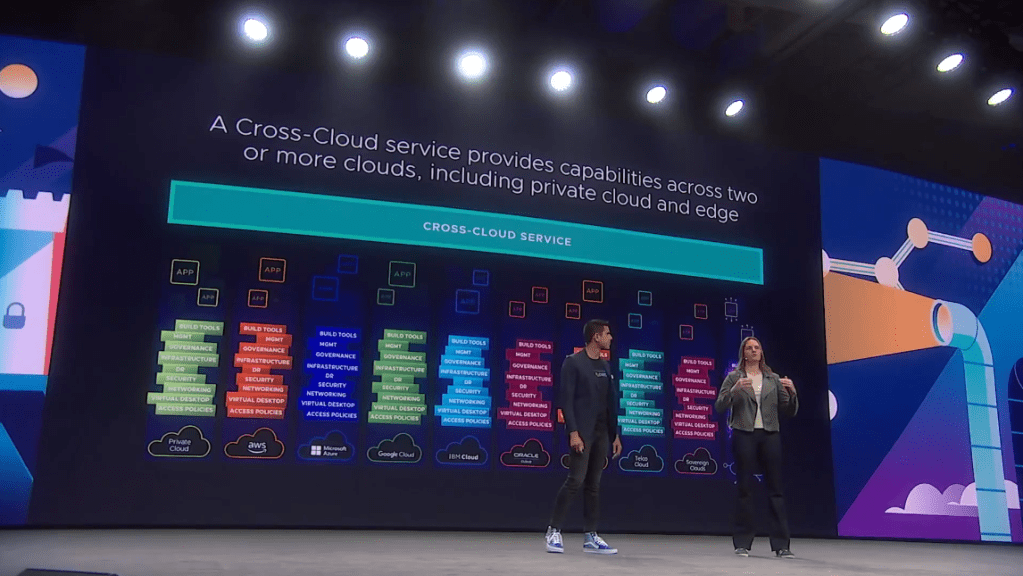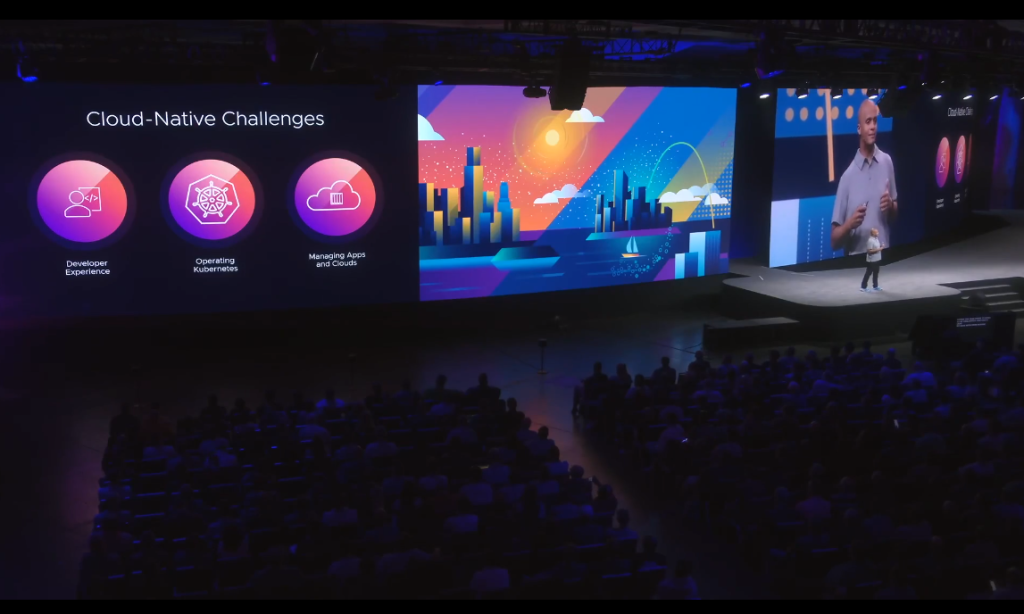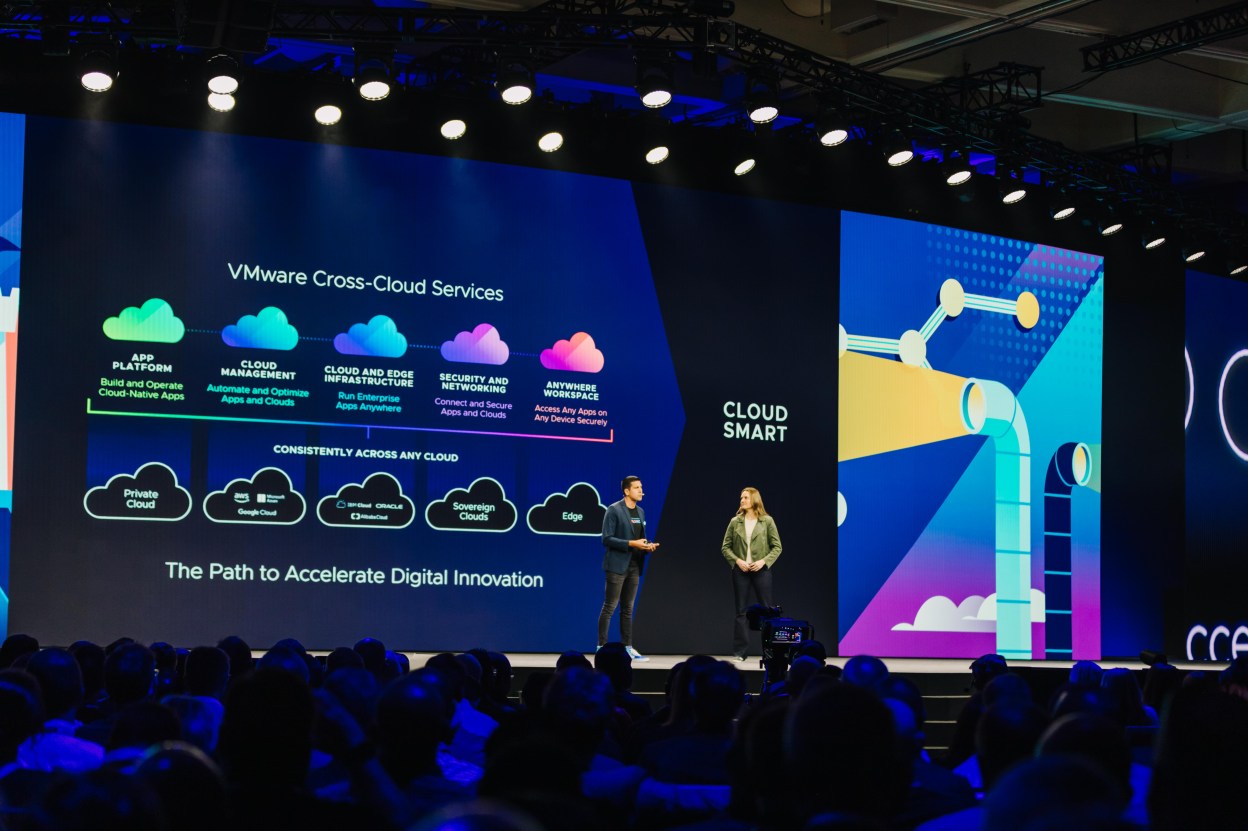Double-click into the concept of “cloud smart.” Take a closer look at the architectural evolution, from single-cloud to cross-cloud services.
In today’s rapid pace of change, businesses that adapt quickly have a huge advantage. In multi-cloud environments, businesses gain agility for profound reinvention.
There’s freedom of choice as business needs and technologies change. There’s flexibility to quickly move things around and scale up or down. There’s access to leading-edge technology from cloud providers.
There are also new problems to solve in a multi-workload, multi-cloud and multi-workspace environment. IT leaders must learn and oversee different cloud operating models and tools and avoid common pitfalls: Are IT teams working in silos? Are there gaps in security? What about outdated infrastructure and monolithic applications? How does it all fit together?
It’s a phase of cloud adoption referred to as “cloud chaos.” Despite all its potential, multi-cloud complexity can actually slow down innovation and inhibit new revenue growth and profit. But there are antidotes!
“What we realize is that it's fundamentally an architecture issue — that we need to move away from relying solely on single-cloud services and embracing what we call cross-cloud services,” said Kit Colbert, chief technology officer for VMware, at VMware Explore.
What Are Cross-Cloud Services?
“’Cross-cloud services means that we move those capabilities up, so now we can have the same networking, security and solution, for example, across multiple clouds, including private and edge,” said Amanda Blevins, vice president and chief technology officer for VMware Americas.
“And by embracing these technologies,” Colbert continued, “we can get you to ‘cloud smart.’”

Cloud smart, explained by VMware CEO Raghu Raghuram, is the next stage of cloud adoption. Multi-cloud strategies in this phase are mature and sophisticated, and as a result, organizations see the bottom-line benefits of cloud.
Below, look at key cloud-smart strategies Raghuram outlined and how cross-cloud services support each approach.
1. Accelerated Application Development
Cloud-smart organizations are getting better and faster at building and operating cloud-native apps. There are three key areas ripe for innovation:
- Developer experiences: “There's going to be things that get in the way — long lead times, cumbersome checkpoints, all of the things that it takes to get infrastructure set up along the way, decreasing the time it takes to get from idea to production,” said DaShaun Carter, staff technologist for VMware.
- Kubernetes operations: “We know that most of you are running Kubernetes in production,” said Carter. “Roughly half of you are planning to expand your Kubernetes environments within the year. There's going to be some challenges.”
- App management across clouds: Carter summed up the challenges here: “Where do I put my apps? Which cloud? Which apps? Am I doing this effectively? Do I have consistent management across? Am I looking at cost versus performance? Do I have the guardrails in place to do this effectively? Can we grow? And does everybody have the information they need?”
Cross-cloud app platform services are a holistic, empowering solution for developers and platform operators alike. It’s a self-service experience. There’s automation and end-to-end security for the entire app development process. There’s greater visibility into the software supply chain. There’s a foundation for building and operating a modern container infrastructure at scale across any Kubernetes and any cloud.
Meanwhile, IT has “near real-time data, cost, automation, and operations all under one roof” using unified multi-cloud management services. “Those insights that we need to operate efficiently and effectively going forward — this is where it's at,” said Carter.

2. Consistent Enterprise Infrastructure
As enterprises transform and run workloads across clouds and at the edge, “there are some challenges here, as well,” Blevins said. “We want to make sure that we can meet our enterprise application requirements. We might want to do data center extension or cloud migration, and of course, we need to be able to recover from disasters like ransomware.”
Cross-cloud infrastructure and networking and security services are a great start to a cloud-smart approach here. “It’s all about that consistent enterprise infrastructure for resiliency, performance and scalability — ubiquitously located across on-prem, all the major public clouds and out to the edge,” said Dave Morera, senior technical marketing architect for VMware. “You can uniquely protect your applications by stopping lateral movement of attacks. You can rapidly migrate and modernize your applications.”
3. Frictionless End-User Experience
Now, all these apps built must be accessible and secure for a hybrid, distributed workforce. “We don't want to have a poor user experience,” said Blevins. “We don't want to have fragmented security. We want to make this easy on our operational teams.”
Cloud-smart organizations use cross-cloud anywhere workspace services. “It enables all employees seamless and secure access to any app on any device from anywhere,” said Teresa Chen, product marketing director of digital workspace solutions for VMware.
With the anywhere workspace, IT can automate processes like onboarding devices, managing app entitlements and updating firmware. They can resolve issues faster using intelligence and machine learning. “This is a clear testament of the efficiency and simplicity it brings to IT,” said Chen.
Get Cloud Smart
Apps are at the center of what organizations do. Multi-cloud environments are the reality where it all happens: where companies create, deploy, operate, secure and access applications.
Everyone’s in this multi-cloud universe together: DevOps, DevSecOps, security professionals, platform operators, cloud architects and executives. And it’s together, that cloud-smart companies will make the cloud work the way it should — with more options and less complexity, more choice and no compromise.
Chart the journey now from cloud chaos to cloud smart, and learn what the journey looked like for one cloud-smart company.

